Retrospektywa Scrum
Download as pptx, pdf1 like349 views
Retrospektywa Scrum
1 of 10
Downloaded 17 times
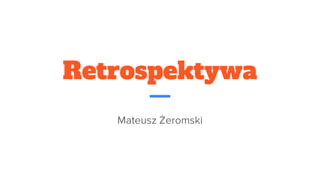

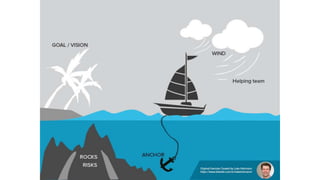


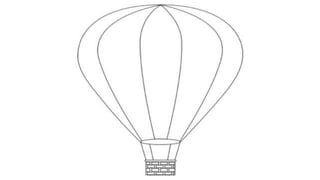
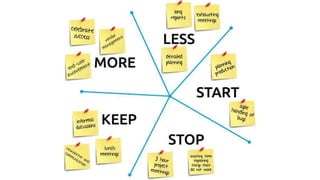
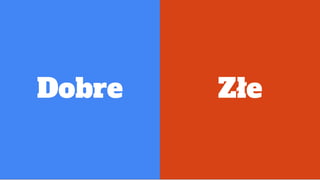

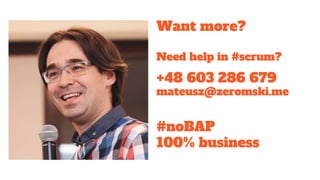
Ad
Recommended
Advanced xfem-analysis
Advanced xfem-analysisnguyen binh
╠²
XFEM allows modeling of cracks independently of the mesh and simulation of crack initiation and propagation along arbitrary paths without remeshing. It uses enriched degrees of freedom and level set methods to describe cracks. There are two main approaches to modeling propagating cracks in XFEM: (1) the cohesive segments approach which uses traction-separation laws along phantom nodes across crack surfaces, and (2) the LEFM approach which uses virtual crack closure technique. Both approaches assume no near-tip singularity and require cracks to propagate in entire elements. The document provides details on modeling stationary cracks, using contour integrals, and implementing the cohesive segments and LEFM approaches in Abaqus.Finite Element analysis -Plate ,shell skew plate
Finite Element analysis -Plate ,shell skew plate S.DHARANI KUMAR
╠²
This document provides an overview of plate and shell theory and finite element analysis for plates and shells. It discusses the assumptions and applications of thin plate theory, thick plate theory, and shell theory. It also describes different types of finite elements that can be used to model plates and shells, including plate, shell, solid shell, curved shell, and degenerated shell elements. Additionally, it covers skew plates and different discretization methods that can be used for finite element analysis of skew plates.FLEXURAL STRESSES AND SHEAR STRESSES
FLEXURAL STRESSES AND SHEAR STRESSESvempatishiva
╠²
The document discusses the theory of bending in beams, including flexural and shear stresses, moment of resistance, and shear stress distribution across different beam sections. It explains key concepts such as the flexure formula, pure bending, and the impact of shear forces on bending stresses. Additionally, it provides equations and derivations to calculate bending and shear stresses for various beam geometries, emphasizing the importance of shear resistance to prevent beam failure.ąźą░ą╗čŗęøčéčŗęø ą┐ąĄą┤ą░ą│ąŠą│ąĖą║ą░ čéčāčĆą░ą╗čŗ ą┐čĆąĄąĘąĄąĮčéą░čåąĖčÅ.pdf
ąźą░ą╗čŗęøčéčŗęø ą┐ąĄą┤ą░ą│ąŠą│ąĖą║ą░ čéčāčĆą░ą╗čŗ ą┐čĆąĄąĘąĄąĮčéą░čåąĖčÅ.pdfmukanovadana932
╠²
ąźą░ą╗čŗęøčéčŗęø ą┐ąĄą┤ą░ą│ąŠą│ąĖą║ą░ čéčāčĆą░ą╗čŗ ą┐čĆąĄąĘąĄąĮčéą░čåąĖčÅMohr circle (Complete Soil Mech. Undestanding Pakage: ABHAY)
Mohr circle (Complete Soil Mech. Undestanding Pakage: ABHAY)Abhay Kumar
╠²
This document discusses plane stress and strain transformations. It introduces concepts such as principal stresses/strains, maximum shear, and Mohr's circle. Mohr's circle can represent the state of stress or strain at a point on a plane. It allows determination of stresses/strains on any plane from knowledge of three independent quantities (e.g. sx, sy, txy). Strain gauges and rosettes are also discussed as tools to measure strain.Eccetric columns
Eccetric columnsTejashri Gulve
╠²
The document discusses different types of loads acting on columns and how they induce stresses. It defines axial load, eccentric load, and eccentricity. It explains that eccentric loads produce both direct and bending stresses while axial loads only produce direct stresses. It provides equations to calculate the maximum and minimum stresses in a column under eccentric loading. An example problem is worked out calculating the maximum stresses in a T-section column loaded eccentrically. The document also discusses loads, eccentricity, and stresses on dams, retaining walls, and chimneys/walls loaded by wind pressure.Applications Of Mohr's Circle
Applications Of Mohr's CircleMohit Shivane
╠²
Mohr's circle is a graphical representation of the transformation between normal and shear stresses on planes at various angles to the original plane of reference in two-dimensional stress fields. It allows determination of principal stresses and maximum shear stress. The document discusses the theory behind Mohr's circle, how to construct it, and provides an example problem calculating principal stresses and maximum shear stress given normal and shear stresses on a reference plane.Flexibility Energy Method in structural analysis
Flexibility Energy Method in structural analysisMahdi Damghani
╠²
The first question asks to determine member forces in a provided truss structure using the force method. The second asks to do the same for a different truss. The third involves drawing bending moment and shear force diagrams for a continuous beam with distributedBasics of strength of materials
Basics of strength of materialsYuga Aravind Kumar
╠²
This document discusses the basics of strength of materials. It defines solid mechanics as the branch of mechanics dealing with the behavior of solid materials under external forces or internal forces caused by temperature changes, phase changes, or other agents. It describes several key mechanical properties of materials including ductility, hardness, impact resistance, plasticity, fracture toughness, elasticity, endurance strength, creep resistance, and more. It also defines stress, strain, and explains Hooke's law relating stress and strain within a material's elastic limit according to its modulus of elasticity.Fatigue Mechanics of Materials
Fatigue Mechanics of MaterialsEngr.Muhammad Zaroon
╠²
This document summarizes key concepts about metal fatigue including:
- Fatigue is the failure of metal under cyclic loading below or above the yield strength. It occurs due to repeated or fluctuating stresses.
- The fatigue process involves crack initiation, propagation, and catastrophic rupture.
- Fatigue can occur in engine crankshafts and aircraft skin due to repeated pressurization cycles.
- Experimental data on copper and mild steel samples showed the relationship between applied load, stress, and number of cycles to failure.
- Methods to improve fatigue life include shot peening to induce compressive stresses and removing stress concentrators.Compression test verification_for_a_wood
Compression test verification_for_a_woodSumitThakur755213
╠²
Experiment NO:6 describes a compression test performed on an anisotropic wooden material to determine its compressive strength when force is applied both parallel and perpendicular to its fibers. When force was applied perpendicular to the fibers, the wooden block failed at a compressive strength of 4.7712x107 N/m2. When applied parallel to the fibers, the failure strength was lower at 1.204x107 N/m2. Detailed load-deformation data is provided in tables showing that the material can withstand over 10 times more load when compressed parallel rather than perpendicular to its fibers, as the fibers act like columns parallel to the load.Brittle coating and test
Brittle coating and testDavalsab M.L
╠²
This document discusses brittle coat testing, which uses brittle coatings to locate stressed areas and strain directions on products. It describes three main types of coatings - resin-based, ceramic-based, and tensile lacquer. Resin-based coatings like Stress Coat use zinc and carbon disulfide and can withstand temperatures up to 600┬░C. Ceramic-based coatings like All Temp suspend ceramic particles in solvent and can withstand up to 370┬░C after melting the particles. Tensile lacquer has high sensitivity below 1000┬░C. The document outlines the application process and explains that cracking patterns are marked and analyzed after loading to determine stress levels.Assignment [4] machining with solutions
Assignment [4] machining with solutionsmoradmoro
╠²
1. The document contains 5 problems related to machining operations including turning, drilling, and tool life calculations.
2. Problem 1 involves determining the cutting time and metal removal rate for turning a cylindrical workpiece.
3. Problem 2 calculates the required cutting speed to complete a turning operation in 5 minutes given specifications for the workpiece, feed rate, and depth of cut.Original Mosfet P-Channel D403 AOD403 85A 30V TO-252 New
Original Mosfet P-Channel D403 AOD403 85A 30V TO-252 NewAUTHELECTRONIC
╠²
The AOD403/AOI403 is a p-channel MOSFET designed for high current applications, featuring advanced trench technology that provides low on-resistance (Rds(on)) and gate charge characteristics. It has a maximum gate-source voltage of ┬▒25V and can handle pulsed drain currents up to -200A, with a junction temperature rating of up to 175┬░C. The device is suitable for consumer market applications but is not authorized for critical life support systems.Ch 2-stress-strains and yield criterion
Ch 2-stress-strains and yield criterionVJTI Production
╠²
Here are the steps to solve this problem:
1) Calculate true stress (Žā) and true strain (╬Ą) at each load using the given diameter values:
Žā = Load/Current cross-sectional area
╬Ą = ln(Initial diameter/Current diameter)
2) Plot true stress vs true strain curve
3) Determine values from the curve:
1) True stress at maximum load = Highest stress value on curve
2) True fracture stress = Stress at fracture point
3) True fracture strain = Strain at fracture point
4) True uniform strain = Strain value where necking begins
5) True necking strain = Strain at start of necking region
6) UltimateConsistency test,Initial & Final setting time of Hydraulic Cement specimen
Consistency test,Initial & Final setting time of Hydraulic Cement specimenMUST,Mirpur AJK,Pakistan
╠²
The document outlines a project conducted by a group from the Department of Civil Engineering at Mirpur University, focusing on determining the consistency of cement mortar using Vicat's apparatus in accordance with ASTM C-187 standards. It includes objectives such as identifying the required water content for standard consistency and determining the initial and final setting times of cement. The procedure involves preparing a cement paste, molding test specimens, and employing the Vicat apparatus to measure consistency through specified methods and calculations.Stability of A Floating Body | Jameel Academy
Stability of A Floating Body | Jameel AcademyJameel Academy
╠²
1) The document describes an experiment to determine the stability of a floating body. It involves measuring the angle of tilt caused by moving a jockey weight along a submerged apparatus at different heights.
2) Calculations are shown to determine values like the metacentric height, center of gravity, and the distance between the center of buoyancy and center of gravity.
3) The results show that as the jockey weight height increases, the center of gravity rises and the horizontal movement causes a greater angle of tilt. The metacentric height was found to be greater than the distance between the center of buoyancy and center of gravity, indicating the body is stable.Elements_of_the_theory_of_plasticity.pptx
Elements_of_the_theory_of_plasticity.pptxArnabHazra16
╠²
The document discusses the theory of plasticity, focusing on various aspects such as the flow curve, true stress and strain, yielding criteria for ductile materials, and the effects of combined stresses. It outlines methodologies including von Mises and Tresca criteria for predicting yielding, emphasizing the difference between true stress-strain and engineering stress-strain curves. Additionally, it highlights complex mathematical relationships necessary for understanding plastic deformation and its implications in structural design.Defelection of beams
Defelection of beamsTalha Shah
╠²
This document contains lecture notes from Chapter 9 of the textbook "Mechanics of Materials" by Ferdinand P. Beer, E. Russell Johnston, Jr., and John T. DeWolf. The chapter discusses deflection of beams under transverse loading. It covers derivation of the elastic curve equation, methods for determining deflection such as moment-area theorems, and analysis of statically indeterminate beams using superposition. Sample problems demonstrate applying these concepts to calculate deflection, slope, and reactions for various beam configurations.Lecture-6 (Flexural Formula).pptx
Lecture-6 (Flexural Formula).pptxMbaloch5
╠²
This document discusses flexural stresses and bending formulas. It defines bending stresses as stresses that occur in a beam under a constant bending moment with zero shear force. It describes the neutral axis and how fibers above and below experience compression and tension. Formulas are derived relating bending stress to radius of curvature and section modulus. Section modulus is defined as the ratio of moment of inertia to the distance of the outermost fiber. Examples are given of calculating section modulus for common shapes and solving bending stress problems for beams.experimental stress analysis-Chapter 5
experimental stress analysis-Chapter 5MAHESH HUDALI
╠²
1. The stress-freezing method locks in deformations caused by applied loads in a diphase polymeric material by using its property of secondary bonds breaking down at the critical temperature.
2. Scattered light polariscopes use the phenomenon that light scattered within a photoelastic model is plane-polarized perpendicular to the incident beam direction, allowing visualization of stress information without slicing the model.
3. Scattered light can act as an interior polarizer or analyzer by resolving the polarized scattered light into components along principal stress directions, allowing measurement of stress differences over interior planes using fringe patterns.Bending stress and shear stress for Asymmetric I-Section.
Bending stress and shear stress for Asymmetric I-Section.Dr.Abhinav .
╠²
The document presents a detailed analysis of bending and shear stresses in an unsymmetrical I-section beam subjected to a pure bending moment of 15 kN-m. It includes calculations for centroids, moments of inertia, maximum stresses in compression and tension, and shear stress distribution diagrams. The methodologies applied involve the use of traditional mechanics of materials principles such as the parallel axis theorem and Bernoulli's equation.DOMV No 8 MDOF LINEAR SYSTEMS - RAYLEIGH'S METHOD - FREE VIBRATION.pdf
DOMV No 8 MDOF LINEAR SYSTEMS - RAYLEIGH'S METHOD - FREE VIBRATION.pdfahmedelsharkawy98
╠²
This document discusses free vibration analysis of linear multi-degree-of-freedom (MDOF) systems. It introduces Rayleigh's method, an approximate technique to determine natural frequencies of MDOF systems by assuming harmonic motion. Rayleigh's method equates maximum kinetic energy to maximum potential energy to derive an expression for natural frequencies in terms of mass and stiffness matrices and an assumed mode shape. The document also discusses exact calculation of natural frequencies and mode shapes by solving the eigenvalue problem of the dynamic matrix. It states that natural frequencies and mode shapes, known as normal modes, are important for qualitative analysis and solving forced vibration problems of MDOF systems.isoparametric formulation
isoparametric formulationmurali mohan
╠²
Isoparametric formulation allows for more accurate modeling of curved boundaries by mapping regular element shapes from a natural coordinate system to the actual curved geometric shapes in the global coordinate system. This mapping technique revolutionized finite element analysis by reducing unnecessary stress concentrations compared to using only straight-edged elements. The document goes on to define isoparametric, superparametric, and subparametric elements, and explains the basic theorems and uniqueness conditions for valid mappings between coordinate systems. It also describes Gaussian numerical integration for assembling stiffness matrices in isoparametric finite element analysis and provides some illustrative numerical examples.Parartima epoxikoy
Parartima epoxikoy╬ō╬╣ŽÄŽü╬│╬┐Žé ╬Ż. ╬ÜŽī╬║╬║╬╣╬Į╬┐Žé
╠²
╬ō╬Ą╬Į╬╣╬║╬ŁŽé ╬┤╬╣╬ĄŽģ╬║Žü╬╣╬Į╬«Žā╬Ą╬╣Žé ╬æ╬Ż╬Ģ╬Ā01_INTRODUCTION_TO_FRACTURE_MECHANICS_linkedin
01_INTRODUCTION_TO_FRACTURE_MECHANICS_linkedinCan Ozcan
╠²
This document provides an introduction to fracture mechanics from Ozen Engineering Inc. It discusses key fracture mechanics concepts like stress intensity factors, J-integrals, and cohesive zone modeling. It also outlines Ozen's fracture mechanics training sessions which will cover topics like linear elastic fracture mechanics analysis in ANSYS, extended finite element modeling, and fatigue crack propagation modeling.1 static failure theories ductile r1
1 static failure theories ductile r1Himanshu Keshri
╠²
This document discusses static failure theories for analyzing machine components under loading. It begins by asking why parts fail and explaining that failure depends on the material properties and type of loading. It then covers different failure modes and the need for separate theories for ductile and brittle materials. The key static failure theories presented are maximum normal stress theory, maximum shear stress theory, distortion energy theory, and their applications to ductile and brittle materials. Examples are provided to illustrate Mohr's circle analysis and applying the theories.Scrum Cheatsheet
Scrum CheatsheetMateusz ┼╗eromski
╠²
This document summarizes a sprint process for a team including planning meetings, daily standups, reviews, and retrospectives. It discusses keeping each meeting on time and focused on key discussions around the sprint goal, backlog, impediments, feedback, and continuous improvement. Metrics like team emotions, participation rates, and daily status are tracked to monitor progress, identify issues, and ensure the team is working collaboratively to complete the sprint.More Related Content
What's hot (20)
Basics of strength of materials
Basics of strength of materialsYuga Aravind Kumar
╠²
This document discusses the basics of strength of materials. It defines solid mechanics as the branch of mechanics dealing with the behavior of solid materials under external forces or internal forces caused by temperature changes, phase changes, or other agents. It describes several key mechanical properties of materials including ductility, hardness, impact resistance, plasticity, fracture toughness, elasticity, endurance strength, creep resistance, and more. It also defines stress, strain, and explains Hooke's law relating stress and strain within a material's elastic limit according to its modulus of elasticity.Fatigue Mechanics of Materials
Fatigue Mechanics of MaterialsEngr.Muhammad Zaroon
╠²
This document summarizes key concepts about metal fatigue including:
- Fatigue is the failure of metal under cyclic loading below or above the yield strength. It occurs due to repeated or fluctuating stresses.
- The fatigue process involves crack initiation, propagation, and catastrophic rupture.
- Fatigue can occur in engine crankshafts and aircraft skin due to repeated pressurization cycles.
- Experimental data on copper and mild steel samples showed the relationship between applied load, stress, and number of cycles to failure.
- Methods to improve fatigue life include shot peening to induce compressive stresses and removing stress concentrators.Compression test verification_for_a_wood
Compression test verification_for_a_woodSumitThakur755213
╠²
Experiment NO:6 describes a compression test performed on an anisotropic wooden material to determine its compressive strength when force is applied both parallel and perpendicular to its fibers. When force was applied perpendicular to the fibers, the wooden block failed at a compressive strength of 4.7712x107 N/m2. When applied parallel to the fibers, the failure strength was lower at 1.204x107 N/m2. Detailed load-deformation data is provided in tables showing that the material can withstand over 10 times more load when compressed parallel rather than perpendicular to its fibers, as the fibers act like columns parallel to the load.Brittle coating and test
Brittle coating and testDavalsab M.L
╠²
This document discusses brittle coat testing, which uses brittle coatings to locate stressed areas and strain directions on products. It describes three main types of coatings - resin-based, ceramic-based, and tensile lacquer. Resin-based coatings like Stress Coat use zinc and carbon disulfide and can withstand temperatures up to 600┬░C. Ceramic-based coatings like All Temp suspend ceramic particles in solvent and can withstand up to 370┬░C after melting the particles. Tensile lacquer has high sensitivity below 1000┬░C. The document outlines the application process and explains that cracking patterns are marked and analyzed after loading to determine stress levels.Assignment [4] machining with solutions
Assignment [4] machining with solutionsmoradmoro
╠²
1. The document contains 5 problems related to machining operations including turning, drilling, and tool life calculations.
2. Problem 1 involves determining the cutting time and metal removal rate for turning a cylindrical workpiece.
3. Problem 2 calculates the required cutting speed to complete a turning operation in 5 minutes given specifications for the workpiece, feed rate, and depth of cut.Original Mosfet P-Channel D403 AOD403 85A 30V TO-252 New
Original Mosfet P-Channel D403 AOD403 85A 30V TO-252 NewAUTHELECTRONIC
╠²
The AOD403/AOI403 is a p-channel MOSFET designed for high current applications, featuring advanced trench technology that provides low on-resistance (Rds(on)) and gate charge characteristics. It has a maximum gate-source voltage of ┬▒25V and can handle pulsed drain currents up to -200A, with a junction temperature rating of up to 175┬░C. The device is suitable for consumer market applications but is not authorized for critical life support systems.Ch 2-stress-strains and yield criterion
Ch 2-stress-strains and yield criterionVJTI Production
╠²
Here are the steps to solve this problem:
1) Calculate true stress (Žā) and true strain (╬Ą) at each load using the given diameter values:
Žā = Load/Current cross-sectional area
╬Ą = ln(Initial diameter/Current diameter)
2) Plot true stress vs true strain curve
3) Determine values from the curve:
1) True stress at maximum load = Highest stress value on curve
2) True fracture stress = Stress at fracture point
3) True fracture strain = Strain at fracture point
4) True uniform strain = Strain value where necking begins
5) True necking strain = Strain at start of necking region
6) UltimateConsistency test,Initial & Final setting time of Hydraulic Cement specimen
Consistency test,Initial & Final setting time of Hydraulic Cement specimenMUST,Mirpur AJK,Pakistan
╠²
The document outlines a project conducted by a group from the Department of Civil Engineering at Mirpur University, focusing on determining the consistency of cement mortar using Vicat's apparatus in accordance with ASTM C-187 standards. It includes objectives such as identifying the required water content for standard consistency and determining the initial and final setting times of cement. The procedure involves preparing a cement paste, molding test specimens, and employing the Vicat apparatus to measure consistency through specified methods and calculations.Stability of A Floating Body | Jameel Academy
Stability of A Floating Body | Jameel AcademyJameel Academy
╠²
1) The document describes an experiment to determine the stability of a floating body. It involves measuring the angle of tilt caused by moving a jockey weight along a submerged apparatus at different heights.
2) Calculations are shown to determine values like the metacentric height, center of gravity, and the distance between the center of buoyancy and center of gravity.
3) The results show that as the jockey weight height increases, the center of gravity rises and the horizontal movement causes a greater angle of tilt. The metacentric height was found to be greater than the distance between the center of buoyancy and center of gravity, indicating the body is stable.Elements_of_the_theory_of_plasticity.pptx
Elements_of_the_theory_of_plasticity.pptxArnabHazra16
╠²
The document discusses the theory of plasticity, focusing on various aspects such as the flow curve, true stress and strain, yielding criteria for ductile materials, and the effects of combined stresses. It outlines methodologies including von Mises and Tresca criteria for predicting yielding, emphasizing the difference between true stress-strain and engineering stress-strain curves. Additionally, it highlights complex mathematical relationships necessary for understanding plastic deformation and its implications in structural design.Defelection of beams
Defelection of beamsTalha Shah
╠²
This document contains lecture notes from Chapter 9 of the textbook "Mechanics of Materials" by Ferdinand P. Beer, E. Russell Johnston, Jr., and John T. DeWolf. The chapter discusses deflection of beams under transverse loading. It covers derivation of the elastic curve equation, methods for determining deflection such as moment-area theorems, and analysis of statically indeterminate beams using superposition. Sample problems demonstrate applying these concepts to calculate deflection, slope, and reactions for various beam configurations.Lecture-6 (Flexural Formula).pptx
Lecture-6 (Flexural Formula).pptxMbaloch5
╠²
This document discusses flexural stresses and bending formulas. It defines bending stresses as stresses that occur in a beam under a constant bending moment with zero shear force. It describes the neutral axis and how fibers above and below experience compression and tension. Formulas are derived relating bending stress to radius of curvature and section modulus. Section modulus is defined as the ratio of moment of inertia to the distance of the outermost fiber. Examples are given of calculating section modulus for common shapes and solving bending stress problems for beams.experimental stress analysis-Chapter 5
experimental stress analysis-Chapter 5MAHESH HUDALI
╠²
1. The stress-freezing method locks in deformations caused by applied loads in a diphase polymeric material by using its property of secondary bonds breaking down at the critical temperature.
2. Scattered light polariscopes use the phenomenon that light scattered within a photoelastic model is plane-polarized perpendicular to the incident beam direction, allowing visualization of stress information without slicing the model.
3. Scattered light can act as an interior polarizer or analyzer by resolving the polarized scattered light into components along principal stress directions, allowing measurement of stress differences over interior planes using fringe patterns.Bending stress and shear stress for Asymmetric I-Section.
Bending stress and shear stress for Asymmetric I-Section.Dr.Abhinav .
╠²
The document presents a detailed analysis of bending and shear stresses in an unsymmetrical I-section beam subjected to a pure bending moment of 15 kN-m. It includes calculations for centroids, moments of inertia, maximum stresses in compression and tension, and shear stress distribution diagrams. The methodologies applied involve the use of traditional mechanics of materials principles such as the parallel axis theorem and Bernoulli's equation.DOMV No 8 MDOF LINEAR SYSTEMS - RAYLEIGH'S METHOD - FREE VIBRATION.pdf
DOMV No 8 MDOF LINEAR SYSTEMS - RAYLEIGH'S METHOD - FREE VIBRATION.pdfahmedelsharkawy98
╠²
This document discusses free vibration analysis of linear multi-degree-of-freedom (MDOF) systems. It introduces Rayleigh's method, an approximate technique to determine natural frequencies of MDOF systems by assuming harmonic motion. Rayleigh's method equates maximum kinetic energy to maximum potential energy to derive an expression for natural frequencies in terms of mass and stiffness matrices and an assumed mode shape. The document also discusses exact calculation of natural frequencies and mode shapes by solving the eigenvalue problem of the dynamic matrix. It states that natural frequencies and mode shapes, known as normal modes, are important for qualitative analysis and solving forced vibration problems of MDOF systems.isoparametric formulation
isoparametric formulationmurali mohan
╠²
Isoparametric formulation allows for more accurate modeling of curved boundaries by mapping regular element shapes from a natural coordinate system to the actual curved geometric shapes in the global coordinate system. This mapping technique revolutionized finite element analysis by reducing unnecessary stress concentrations compared to using only straight-edged elements. The document goes on to define isoparametric, superparametric, and subparametric elements, and explains the basic theorems and uniqueness conditions for valid mappings between coordinate systems. It also describes Gaussian numerical integration for assembling stiffness matrices in isoparametric finite element analysis and provides some illustrative numerical examples.Parartima epoxikoy
Parartima epoxikoy╬ō╬╣ŽÄŽü╬│╬┐Žé ╬Ż. ╬ÜŽī╬║╬║╬╣╬Į╬┐Žé
╠²
╬ō╬Ą╬Į╬╣╬║╬ŁŽé ╬┤╬╣╬ĄŽģ╬║Žü╬╣╬Į╬«Žā╬Ą╬╣Žé ╬æ╬Ż╬Ģ╬Ā01_INTRODUCTION_TO_FRACTURE_MECHANICS_linkedin
01_INTRODUCTION_TO_FRACTURE_MECHANICS_linkedinCan Ozcan
╠²
This document provides an introduction to fracture mechanics from Ozen Engineering Inc. It discusses key fracture mechanics concepts like stress intensity factors, J-integrals, and cohesive zone modeling. It also outlines Ozen's fracture mechanics training sessions which will cover topics like linear elastic fracture mechanics analysis in ANSYS, extended finite element modeling, and fatigue crack propagation modeling.1 static failure theories ductile r1
1 static failure theories ductile r1Himanshu Keshri
╠²
This document discusses static failure theories for analyzing machine components under loading. It begins by asking why parts fail and explaining that failure depends on the material properties and type of loading. It then covers different failure modes and the need for separate theories for ductile and brittle materials. The key static failure theories presented are maximum normal stress theory, maximum shear stress theory, distortion energy theory, and their applications to ductile and brittle materials. Examples are provided to illustrate Mohr's circle analysis and applying the theories.Consistency test,Initial & Final setting time of Hydraulic Cement specimen
Consistency test,Initial & Final setting time of Hydraulic Cement specimenMUST,Mirpur AJK,Pakistan
╠²
More from Mateusz ┼╗eromski (20)
Scrum Cheatsheet
Scrum CheatsheetMateusz ┼╗eromski
╠²
This document summarizes a sprint process for a team including planning meetings, daily standups, reviews, and retrospectives. It discusses keeping each meeting on time and focused on key discussions around the sprint goal, backlog, impediments, feedback, and continuous improvement. Metrics like team emotions, participation rates, and daily status are tracked to monitor progress, identify issues, and ensure the team is working collaboratively to complete the sprint.The Product Canvas_11.10.16
The Product Canvas_11.10.16Mateusz ┼╗eromski
╠²
This document provides a template for describing a product, including defining the target group through personas, setting goals and metrics, and outlining the desired user experience through epics, scenarios, and design elements. It structures the information into sections on the target group, the big picture of the product, details of the product functionality and user experience, and naming the product.Life Change Stress Test
Life Change Stress TestMateusz ┼╗eromski
╠²
The document describes a Life Change Index Scale that assigns numerical scores to various life events based on their estimated impact. A higher total score indicates a greater likelihood of illness in the near future, as the body does not cope well with sudden changes and disruptions to routines. Events like the death of a spouse (100 points) have the highest scores, while more minor events like a change in sleeping habits (16 points) have lower scores. The scale provides a way for individuals to informally assess their risk of stress-related illness based on recent or anticipated life changes.2019 Scrum Master Trends
2019 Scrum Master TrendsMateusz ┼╗eromski
╠²
The document summarizes the key findings of a survey of over 2,100 Scrum Masters worldwide, conducted by Age of Product and Scrum.org. Some of the main results include: 58% of respondents have participated in an agile transition, with 42% launching one. Nearly 50% are using a scaling framework like SAFe, LeSS or Nexus. 78% of Scrum Masters have less than 5 years of experience. The survey provides insights into trends in agile adoption, roles, salaries, and more.Chaos Report 2015
Chaos Report 2015Mateusz ┼╗eromski
╠²
This document summarizes key findings from the CHAOS Report 2015. It discusses changes made in how the data is presented, with many new charts from the CHAOS and SURF databases. A major change discussed is how project success is now defined, with six new attributes of success tracked in the CHAOS database. Data on project resolution by size, industry, and region is presented, showing smaller projects and those in retail have higher success rates. Breaking large projects into smaller ones is recommended to increase value realization.Scrum Checklist
Scrum ChecklistMateusz ┼╗eromski
╠²
The document is a Scrum checklist created by Henrik Kniberg to help teams get started with Scrum or assess their current implementation. It lists various Scrum practices and categories them based on their importance - core Scrum practices, recommended practices, and optional practices. The checklist is meant to be used as a discussion tool at retrospectives, not as an evaluation tool, to help teams identify areas for improvement. It should not be used prescriptively or punitively to check compliance.Chaos Report - 2015
Chaos Report - 2015Mateusz ┼╗eromski
╠²
This document summarizes key findings from the CHAOS Report 2015. It finds that agile projects have a much higher success rate than waterfall projects, with agile projects almost 4 times as likely to succeed. Waterfall projects are 3 times as likely to fail as agile projects. Additionally, project size greatly impacts outcomes - smaller projects have a much higher success rate than larger projects, with small agile projects having only a 4% failure rate. The document also examines resolution rates by different factors like industry, region, and project type. Purchased applications have the highest success rate while projects developed from scratch using traditional methods have the highest challenged rate.Version one 10th-annual-state-of-agile-report
Version one 10th-annual-state-of-agile-reportMateusz ┼╗eromski
╠²
The survey found that agile adoption continues to grow significantly. Over the last decade, the number of survey respondents has increased over threefold. Agile is no longer used just by startups and small teams, but also by large enterprises - over 24% of respondents worked for organizations with over 20,000 employees. The top benefits of agile cited for the past five years are managing changing priorities, team productivity, and project visibility. While adoption is increasing, culture change remains a barrier, though available agile talent is also limiting further scaling. Scrum remains the most used methodology, while SAFe is gaining popularity and Kanban use has increased significantly.Jak zastapic Scrum Mastera
Jak zastapic Scrum MasteraMateusz ┼╗eromski
╠²
Prezentacja z meetup
ProductTank Marzec
https://www.meetup.com/producttank-warsaw/events/258881893/Scrum is not #perfect
Scrum is not #perfectMateusz ┼╗eromski
╠²
Scrum is not always the perfect framework for software development in every situation. While Scrum allows for high impact and value early on when first developing an MVP, adding additional value and features becomes more complicated over time. Additionally, at the early startup stage Scrum ceremonies can be too complex and slow down the need for fast iteration. Later, when a product has many features, extending it requires more effort and Scrum ceremonies like daily standups may become less useful. It is suggested to switch to a Kanban approach without timeboxed sprints in these situations. The key is to start without strict processes, introduce Scrum rules when problems occur, and be willing to transition frameworks as the needs of the team change over time.In the Scrum the PO role is a key
In the Scrum the PO role is a keyMateusz ┼╗eromski
╠²
The document discusses the roles in Scrum and which role is key to ensuring product success and value. It argues that the Product Owner role is the most important because they are responsible for understanding stakeholders, determining what provides the most value, and ensuring the product earns money for the business. While the Scrum Master and Development Team have important roles, only the Product Owner focuses on business needs and the biggest value. If there are problems with the product, finding a better Product Owner who provides truthful guidance about the product is the solution.New leader is not a Scrum Master!
New leader is not a Scrum Master!Mateusz ┼╗eromski
╠²
The document advises that a Scrum Master or Agile Coach should focus on creating a new team leader rather than seeing themselves as the leader, so that they can then relax from leadership duties. It suggests they need to be humble, smart, and pragmatic to find a new leader to take over the team, allowing the Scrum Master or Coach to have more free time.Scrum Master - 8 stances - images for trainings
Scrum Master - 8 stances - images for trainingsMateusz ┼╗eromski
╠²
The Scrum Master is responsible for ensuring Scrum is understood and enacted. They do this through coaching the Development Team in self-organization and cross-functionality. The Scrum Master helps remove impediments and protects the team from outside interference so they can focus their efforts on delivering valuable, working software frequently.Ad
Retrospektywa Scrum
- 8. Dobre Złe
- 9. Pytania od Piotra :) Co posz┼éo dobrze? - z czego jeste┼ø zadowolony? - co powinni┼ømy kontynuowa─ć? - wszelkie pochwa┼éy, podzi─Ökowania dla cz┼éonk├│w zespo┼éu? Co mog┼éo p├│j┼ø─ć lepiej? - co posz┼éo nie tak? - co lub kto przeszkadza w dostarczaniu warto┼øci? - jakie obszary s─ģ do poprawy? - co nie posz┼éo zgodnie z oczekiwaniami? Czego chcemy spr├│bowa─ć w nowym Sprincie? - czego jeszcze nie pr├│bowali┼ømy, a mog┼éoby zadzia┼éa─ć? - jak─ģ now─ģ rzecz chcia┼éby┼ø wypr├│bowa─ć? - jakie nowe podej┼øcie chcia┼éby┼ø przetestowa─ć? Co nas zastanawia? - jakie masz pytania, kt├│re s─ģ jeszcze bez odpowiedzi? - jakie wyzwania powinni┼ømy rozwi─ģza─ć? - czy s─ģ rzeczy, kt├│re robimy z niejasn─ģ warto┼øci i wydaj─ģ si─Ö Tobie bez sensu?
- 10. Want more? Need help in #scrum? +48 603 286 679 mateusz@zeromski.me #noBAP 100% business
